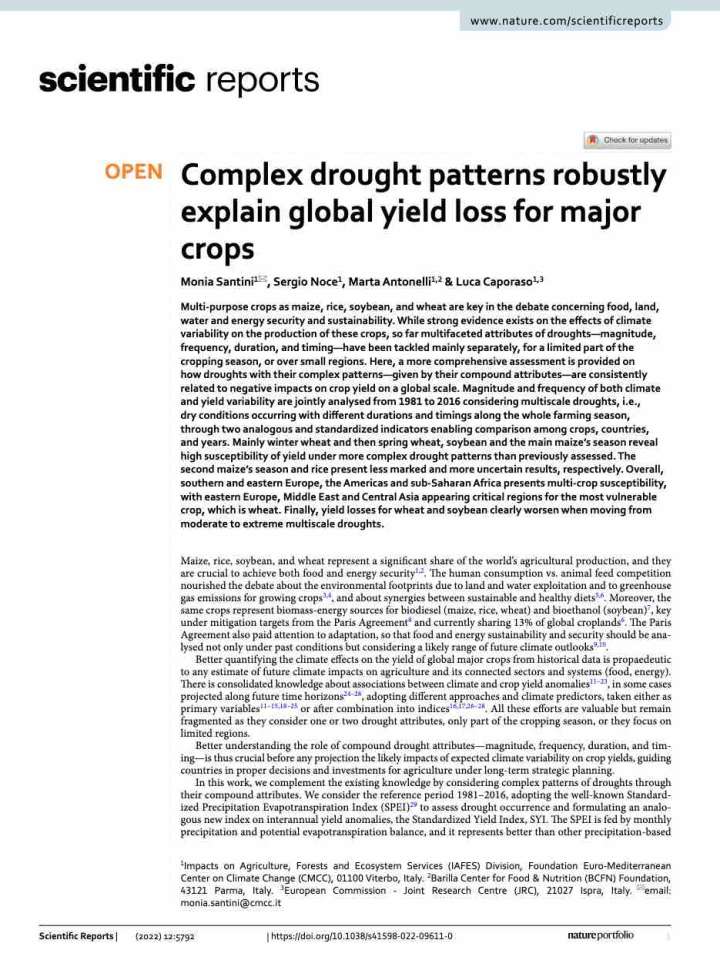Complex drought patterns robustly explain global yield loss for major crops
This article complements the existing knowledge by considering complex patterns of droughts through their compound attributes. Focusing on the reference period 1981–2016, it adopts the well-known Standardized Precipitation Evapotranspiration Index (SPEI) to assess drought occurrence and formulates an analogous new index on interannual yield anomalies, the Standardized Yield Index, SYI. Multi-purpose crops as maize, rice, soybean, and wheat are key in the debate concerning food, land, water and energy security and sustainability. While strong evidence exists on the effects of climate variability on the production of these crops, so far multifaceted attributes of droughts—magnitude, frequency, duration, and timing—have been tackled mainly separately, for a limited part of the cropping season, or over small regions.
Here, a more comprehensive assessment is provided on how droughts with their complex patterns—given by their compound attributes—are consistently related to negative impacts on crop yield on a global scale. Magnitude and frequency of both climate and yield variability are jointly analysed from 1981 to 2016 considering multiscale droughts, i.e., dry conditions occurring with different durations and timings along the whole farming season, through two analogous and standardized indicators enabling comparison among crops, countries, and years.
Explore further
